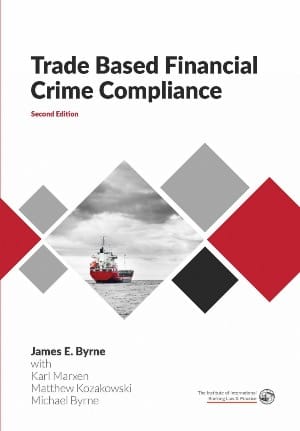Letters of Indemnity: Who’s Really Protected?
Recent court cases in Singapore have shone a spotlight on the serious perils of relying on a letter of indemnity (LOI) in lieu of presentation of shipping documents.
Recent court cases have shone a spotlight on the serious perils of relying on a letter of indemnity (LOI) in lieu of presentation of shipping documents. In the Singapore case, UniCredit Bank A.G. v. Glencore Singapore Pte. Ltd., the letter of credit in question required presentation of, among other documents, a signed commercial invoice and full set of original bills of lading. But the LC also provided for an alternate presentation option of the seller/beneficiary’s commercial invoice and an LOI in a form prescribed by the LC. Notably, a conforming LOI was to be addressed to the buyer/applicant.
see also: Fraud: Losses, Losers, and LOIs
By issuing its LC in this manner, an issuing bank is essentially willing to give up its right to receive the original B/Ls and instead rely on an LOI which conforms to specifications that it prescribed which give it, as LC issuer, no control over the disposition of the B/Ls. In the months after the unravelling of Hin Leong Trading, the Association of Banks in Singapore (ABS) issued a Code of Best Practices for Commodity Financing in which it provided the guideline that an LOI should be addressed to the issuing bank.
If an LOI is addressed to the applicant, the beneficiary would forward the B/Ls to the applicant instead of the issuing bank if the B/Ls are available. If the beneficiary is undertaking to deliver the B/Ls to the issuing bank and, failing to do so, it could be responsible for breach of its contractual obligation.
In “Letters of Indemnity and Banks’ Collateral Security” (Feb 2021 DCW 27), Peter Sproston wrote in his concluding remarks: “LOIs can represent a minefield for the banks involved in financing the flow of trade goods. E-BLs permitting digital endorsements and delivery of goods would be a massive enhancement of such trade flows but their general acceptance to date has not been very common, being limited to bilateral movements of goods between trusted parties. Until such systemic change can be implemented it behoves parties handling BLs to be aware of the issues surrounding the use of LOIs, both disclosed and undisclosed, and the potential risks they can pose to banks’ perceived collateral security.”
UniCredit Bank A.G. v. Glencore Singapore Pte. Ltd. also involved the murky world of “sale and buy back” repo financing transactions used “for working capital optimisation” purposes whereby commodities can be sold and bought back by the same trader mere minutes later. Sometimes a bank has visibility of both swings of the transaction, but other times the buyback occurs unbeknownst to the LC issuer. Most banks would not tolerate this trading tactic if they are requested to issue LCs for repo transactions but some have been ensnared in unsavory practices and after the Hin Leong debacle certain banks have scaled back significantly or withdrawn entirely from commodity financing.

Trade Based Financial Crime Compliance
The all-in-one guidebook for trade and compliance teams to tackle TBML, sanctions, KYC, at the intersection of trade and compliance.









